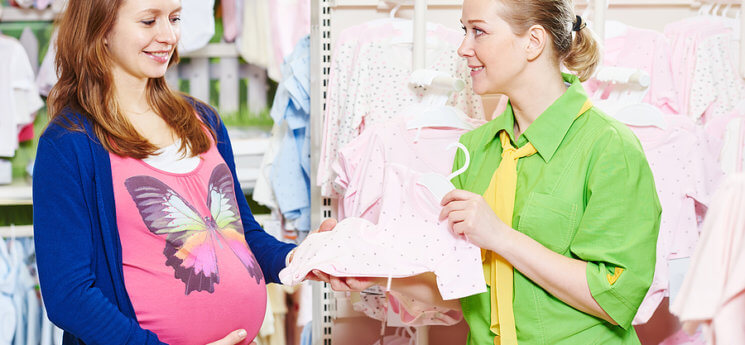Do you really need a baby registry? After all, won’t most friends and family pitch in with some diapers or cute clothes anyway? Well, maybe they will, but even if you know that those around you will be more than happy to contribute to meeting your new set of needs, a registry benefits you and your gift-givers in meaningful and intentional ways.
First, the creation of the registry will require you to think through key decisions. You will have to ponder everything from diapering, to feeding, clothing, and decorating, and balance all of that against your own budget. These parenting choices can be intimately personal.
Creating a registry not only presses you to think through the options, but also once you come to your decisions, it provides a gentle way to share your preferences with family and friends. Even better, it can ease the pressure on your budget and help you get closer to some of your dreamy non-essentials.
How to choose a baby registry for you?
Priorities and Considerations:
Before considering registry options, you will need to think through your parenting decisions and consider what items you prefer to buy and what would be nice to have help with. If your budget is tight, then simply making sure you have all the essentials and the process is easy on your shoppers might be most important.
Maybe you really want help with the furniture, in which case you might choose a registry that is furniture-oriented and buy the smaller things on your own. Perhaps you feel those shopping for you will be more likely to pick up lots of small things, so you handle the big stuff and fill your registry with cute clothes and toys.
The most successful registries are those that don’t stretch your shoppers too far out of their comfort zone, while also showcasing the items you are most excited about. Here are things to consider before you choose a registry and begin adding the products you want to use in raising your baby:
Diapers:
Cloth? Disposable? Compostable? A mix? Diapers have come a long way in recent years! Gone are the days of folding 30 cloth diapers every time you do laundry (although you can still do that, and it is probably the cheapest route.) These days, pocket diapers that offer either cloth or disposable inserts, or compostable elements rule the day.
Consider your budget:
Your water usage, your environmental impact, and your energy level on this one. Some estimate savings of over $2000 over the course of your child’s diapering years with cloth, and even more if you plan to have more kids and use the same diapers. Putting these on your registry can really bump up your long-term savings.
On the other hand, many daycares do not allow cloth diapers and many parents find them to be just too much work. In some places, water is at a premium and it doesn’t make sense to do more laundry. Whatever your situation looks like, every option is available to you from hybrid diapers to a hybrid approach.
Breastfeeding vs Formula:
One is free, fills your baby with the antibodies to the germs that Mom and baby are exposed to on a daily basis, and you never have to pack it up to carry it around or warm it to a proper temperature. The other is essential in some cases.
- Two Dads, for example.
- A baby that has trouble gaining weight.
- A baby and mom set that simply have a tough time or medical issues with breastfeeding. (See our breastfeeding guide.)
- A family system that somehow doesn’t allow for it.
Most practitioners don’t recommend introducing solid foods until 4-6 months, and even then they usually don’t form the bulk of baby’s calories for a while longer. What you hope to do (and it may change as things play out) does impact the gear you will need, so think this one through.
We recommend Enfamil because they realize that every little digestive system is different. What makes one baby smile might make another one cry. That’s why Enfamil has developed an entire family of formulas to meet your baby’s changing needs.
Materials:
Can you afford and do you want organic products? How do you feel about plastic versus natural materials? Pacifiers, for example, come with silicone nipples on plastic, or all natural rubber. Glass bottles with silicone covers to prevent breaking have become widely available.
- What about crib mattresses, sheets, swaddlers, and pjs, all available in organic materials?
- When it comes to toys, do you prefer wooden toys over plastic ones?
- Most toy and bottle makers have removed BPA–is that enough for you or are you concerned about other chemicals such as phthalates, BPS or BPF (bisphenol-S or bisphenol-F), or polyvinyl chloride?
When your baby grows into sippy cups, plates, and utensils, these also come in an array of materials: silicone, bamboo, and stainless steel to mention a few. It’s important to think about where you stand with all of this, and what sort of line you want to hold (if you want to hold one) as you navigate the sea of products. If natural materials and an eco-friendly approach is your top priority, explore BabyEarth.
Style:
Maybe you have strolled through Target’s baby section and you love every little thing you see. Or is the opposite true for you?
- Would you prefer funky decor and unique, handmade pieces from Etsy?
- Or adorable classics from a specialty shop like Skip Hop?
- Or personalized uniques from Munchkin?
- Do you have strong opinions about gender neutrality in baby stuff, or do you want to play up boy or girl stuff? Maybe you want to deliberately flout the norms.
With a registry, you can make and communicate your choices around how gender-oriented you want your baby’s things to be; some parents want their baby’s gender to be abundantly clear by the colors of their clothes, blankets, and gear, while others prefer a variety of colors and patterns even if it leaves strangers confused.
A registry can really help you achieve your style goals, as it will not only allow you to showcase your taste, but it will point the way for those who prefer to go off-list (no guarantees they will stick to your plan, though!)
Costs and Shoppers:
Yes, this is your child and these are your choices, but you are part of a greater community. It is a good thing to take your people into consideration as you design your registry, and let graciousness flow in all directions.
- If you didn’t have any help, what could you afford?
- What can your family and friends afford and what kind of shoppers are they?
- Online only?
- Do they prefer to go to the store?
- Do they only go to one or two stores?
- If you take a hard line on organic products only, can you afford to maintain that as the baby grows up?
- How do you feel about hand-me-downs and used products?
Non-material Support:
Are you already freaking out about paying for college? Braces? Potential ER bills if your child turns out half as daring as your adrenaline-driven partner?
Some registries offer ways for your community to contribute to saving funds for specific goals. This might be a great option if you want to jump start college savings or create a travel fund, especially if you happen to live far from family.
With a bit of consideration, most parents can find a reasonable balance between their priorities, their high hopes, and the realities of their circumstances.
The next step, then, is to choose a registry that works for your family. With a few exceptions, most of the registries listed here offer a combination of the following:
- Welcome boxes with samples and coupons
- 10-15% completion discounts to finish your list
- Apps to help manage your registry
- Thank-you note trackers
- and free consultations
Registry Options:
At the top of the heap, we find the universal registries. If you simply can’t pin it down to just one baby things supplier, these allow you to add products from many different stores. If you are the parent looking for a baby backpack for hiking, combination diapers, a mod stroller cover, handmade wall decor, as well as bath toys and nail clippers, this might be the right route for you.
- MyRegistry boasts an extensive list of pre-approved retailers including big box stores and many specialty boutiques.
- Babylist allows you to add items from large and small stores alike, as well as offering group gifting. Furthermore, you can begin cash funds for various causes (trips or college, for example), and a place for people to sign up for non-monetary support, such as dog walking or meals. You can even add newborn baby items from your favorite brick and mortar locales. So, if your favorite local coffee shop happens to sell adorable onesies with their logo, you can add those to your Babylist even if they do not have an online store.
If staying within budget, acquiring all the essentials, and keeping it recognizable for your shoppers are your top priorities, consider a registry at a comprehensive store that almost everyone is familiar with. On this list, Amazon and Target allow you to add items from other websites, and Amazon also enables group gifting so that multiple people can contribute toward high-dollar items.
A baby registry can be a huge help as you prepare for your newborn needs. As a byproduct of your new baby checklist it is a great way to organize your own priorities, communicate your preferences to friends and family, and receive the help and love that so many truly want to offer when you are expecting a newborn.




